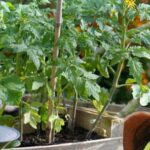Vegetable gardening has become increasingly popular in recent years, with people recognizing the numerous benefits it offers. In this blog post, we will delve into the fascinating world of vegetable gardening and explore the different types of gardens that can be created. Whether you have a spacious backyard or limited balcony space, there is a vegetable garden option that suits your needs.
Gardening not only provides an opportunity to grow fresh and nutritious food but also offers a chance to connect with nature, reduce stress, and enjoy the satisfaction of harvesting your own produce. With concerns about food security and environmental sustainability on the rise, many individuals are turning to vegetable gardening as a way to take control of their food supply and make a positive impact on their surroundings.
As we navigate through this article, we will discuss traditional in-ground gardens, raised bed gardens, container gardens, vertical gardens, hydroponic gardens, community gardens, and intensive gardening techniques. Each type of garden has its advantages and disadvantages, allowing individuals to choose what works best for their available space, resources, and personal preferences.
So whether you’re a seasoned gardener or just starting out on your green thumb journey, get ready to explore the world of vegetable gardening. From small patio containers to large community plots, there is a vegetable garden waiting for you to dig in.
Traditional In-Ground Gardens
When it comes to vegetable gardening, traditional in-ground gardens are one of the most common and well-known methods. This method involves planting vegetables directly in the ground, usually in a designated plot or garden bed. In-ground gardens have been used for centuries and offer several advantages and disadvantages.
Advantages of traditional in-ground gardens include their ability to provide deep soil for plants to establish strong roots and access nutrients. Additionally, in-ground gardens tend to have better drainage than other types of gardens, preventing waterlogging that can be detrimental to plant health. Furthermore, in-ground gardens provide ample space for plants to spread out and grow without restrictions.
However, there are also disadvantages to consider with traditional in-ground gardening. One major drawback is the physical labor involved in preparing the soil. It typically requires digging, tilling, amending with compost or fertilizers, and removing rocks or debris. Moreover, maintaining proper weed control can be challenging because weeds compete with the vegetables for resources such as sunlight and water.
For those interested in starting an in-ground garden, it is crucial to properly prepare the soil and perform regular maintenance tasks for optimal plant growth. To prepare the soil:
- Clear any existing vegetation from the area.
- Remove rocks and debris.
- Loosen the soil using a spade or garden fork.
- Amend with organic matter such as compost or aged manure.
Once your garden bed is prepared, there are some important maintenance practices to follow:
- Water regularly: Provide consistent moisture but avoid overwatering.
- Mulch: Apply mulch around plants to keep weeds at bay and retain moisture.
- Weed control: Regularly remove weeds by hand or use organic weed control methods.
- Fertilize: Based on your specific crop needs, fertilize periodically with organic amendments.
By following these tips and guidelines, you can create and maintain a successful traditional in-ground vegetable garden. However, remember that each gardening method has its strengths and limitations. Therefore, it’s worth exploring other types of vegetable gardens to find one that best fits your needs, available space, and personal preferences. Whether you choose raised bed gardens, container gardens, or even vertical gardens, the joy and satisfaction of growing your own vegetables are guaranteed.
Raised Bed Gardens
Raised bed gardens are a popular alternative to traditional in-ground gardens. They offer many benefits and advantages that can enhance your gardening experience. A raised bed garden is essentially a garden plot that is elevated above the ground level by using raised sides or frames.
One of the main benefits of raised bed gardens is improved soil quality and drainage. The raised sides of the beds allow for better control over soil composition, which can lead to healthier plants and higher yields. Additionally, the elevated design promotes proper drainage, preventing waterlogging and root rot.
There are various materials and designs to choose from when building a raised bed garden. Some common materials include wood, recycled plastic, or metal. Wood is a popular choice due to its affordability and ease of customization. Recycled plastic beds are durable and long-lasting, while metal beds provide a sleek and modern look.
Here is a step-by-step guide on how to build and maintain a successful raised bed garden:
- Choose the location: Select an area with access to sufficient sunlight for at least six hours per day.
- Determine the size: Decide on the dimensions of your raised bed garden based on your available space and gardening needs.
- Build the frame: Use your chosen material to construct the frame for your raised bed, making sure it is sturdy and level.
- Prepare the soil: Remove any existing grass or weeds from the designated area, then fill the frame with nutrient-rich soil or compost.
- Planting and maintenance: Start planting your desired vegetables in rows or in accordance with their specific spacing requirements. Regularly water, weed, and fertilize your plants as needed.
Overall, raised bed gardens provide an excellent solution for those looking to maximize their gardening potential in limited spaces or areas with poor soil quality. They can be built at various heights to accommodate different physical abilities or preferences, making them accessible to all gardeners. With proper care and maintenance, raised bed gardens can yield bountiful crops while also being aesthetically pleasing additions to any outdoor space.
| Advantages | Disadvantages |
|---|---|
| – Improved soil quality and drainage | – Initial cost of materials for building the raised bed |
| – Better control over soil composition | – Limited root depth for certain crops |
| – Easy access and maintenance | – Requires regular watering due to increased drainage |
Container Gardens
If you live in an apartment or have limited outdoor space, container gardening is the perfect solution for growing your own vegetables. Container gardens offer the versatility and convenience of gardening in small spaces, allowing anyone to enjoy the benefits of homegrown produce. Whether you have a balcony, patio, or even just a windowsill, a container garden can provide you with fresh vegetables right at your fingertips.
One of the advantages of container gardening is that it allows for greater control over soil quality and drainage. Unlike traditional gardens where the condition of the soil may vary, you have full control over selecting the appropriate potting mix for your plants. This ensures optimal growth and minimizes the risk of disease or pests. Additionally, containers provide excellent drainage which prevents waterlogging and root rot.
When selecting containers for your vegetable garden, it’s important to choose ones that are large enough to accommodate root growth and allow proper airflow. Consider using materials such as ceramic pots, wooden crates, or even recycled items like buckets or barrels. Make sure the containers also have drainage holes at the bottom to prevent water accumulation.
Another factor to consider when container gardening is choosing suitable vegetables for this environment. Some vegetables thrive in containers such as tomatoes, peppers, lettuce, herbs, and strawberries. These plants are compact and adapt well to being grown in pots. However, it’s important to research each specific plant’s requirements regarding sunlight exposure and watering needs.
To ensure success with your container garden, regular maintenance is key. Providing adequate water and nutrients to your plants is crucial for their growth and productivity. Ensure that containers are placed in areas with sufficient sunlight according to each plant’s requirements.
Vertical Gardens
Vertical gardening is a unique and innovative approach to vegetable gardening that involves growing plants in an upward direction rather than spreading them out horizontally. This method has gained popularity in recent years, especially among urban dwellers and those with limited space for traditional gardens.
One of the key benefits of vertical gardens is their ability to save space. By growing plants vertically, gardeners can utilize walls, fences, trellises, or other structures to maximize growing area without taking up valuable ground space. This is particularly advantageous for those living in apartments or small houses with limited outdoor areas.
Another advantage of vertical gardens is their potential to increase yield. When plants are grown vertically, they receive more sunlight and air circulation, which can lead to better growth and productivity. Additionally, vertical gardening allows for easier access to plants for maintenance tasks such as watering, pruning, and harvesting.
There are several types of structures that can be used for vertical gardening. Some common examples include trellises, arbors, pallets, hanging baskets, and wall-mounted planters. Each type has its own advantages and suitability for different types of plants. For example, vine crops like tomatoes or cucumbers thrive on trellises or arbors where they can climb and spread out.
| Advantages | Disadvantages |
|---|---|
| – Saves space | – Requires proper structural support |
| – Increases productivity | – May require additional watering and fertilizing |
| – Allows for easy access and maintenance | – Some plants may not thrive in vertical conditions |
Hydroponic Gardens
What is Hydroponic Gardening?
Hydroponic gardening is a revolutionary method of growing plants without the use of soil. Instead, plants are grown in a water-based nutrient solution that provides all the necessary elements for their growth and development. This allows for maximum control over the plant’s environment, leading to faster growth rates and higher yields compared to traditional gardening methods. In hydroponics, plants receive their nutrients directly from the water solution, eliminating the need for roots to search for nutrients in soil.
The Advantages and Disadvantages of Hydroponic Systems
One of the key advantages of hydroponic gardening is its ability to maximize yield in limited space. With traditional gardening methods, plants require ample space for root growth and tend to compete for resources in the soil. In hydroponics, plants take up much less space because their roots are only submerged in water or grow within an inert medium such as perlite or coco coir. As a result, more plants can be grown per square foot compared to traditional gardens.
Another advantage of hydroponics is its precise control over nutrient delivery. The nutrient solution can be tailored specifically for each plant’s needs, ensuring optimal nutrition uptake and reducing the risk of deficiency or nutrient imbalance. Additionally, since there is no soil involved, the risk of soil-borne pests and diseases is greatly reduced.
However, it is important to note that hydroponic systems do have some disadvantages as well. One major challenge is maintaining proper pH levels and nutrient concentrations in the water solution. These parameters must be carefully monitored and adjusted as needed to prevent any negative impacts on plant health or growth. Additionally, setting up a hydroponic system can require some initial investment in equipment such as pumps, reservoirs, and grow lights.
Setting Up and Maintaining a Successful Hydroponic Garden
To set up a hydroponic garden, you will first need to choose a suitable system based on your available space, budget, and gardening goals. Some popular types of hydroponic systems include nutrient film technique (NFT), deep water culture (DWC), and ebb and flow (flood and drain) systems.
Once you have selected a system, it is important to carefully follow the instructions for setting it up and preparing the nutrient solution. It is recommended to start with smaller plants or seedlings to allow them to establish their root systems in the hydroponic environment. Regular monitoring of nutrient levels, pH, and water temperature is essential to ensure optimal growth.
Maintenance tasks for a hydroponic garden include regular cleaning of equipment, checking for any signs of pests or diseases, trimming plants to promote air circulation, pruning roots if necessary, and replacing or replenishing nutrient solutions as needed. It is also important to regularly inspect the system for any leaks or malfunctions that could affect plant health.
By following proper maintenance practices and regularly monitoring key parameters, you can create an efficient and productive hydroponic garden that provides maximum yield without the need for soil. With its numerous advantages and potential for year-round gardening, hydroponics offers an exciting option for vegetable growers looking to maximize their harvests.
Community Gardens
Community gardens are an integral part of many neighborhoods, serving as a space where individuals come together to cultivate plants and create a sense of community. These gardens not only provide fresh produce but also offer numerous benefits such as promoting sustainable practices, improving mental health, and fostering connections among community members.
Benefits and Importance of Community Gardens
One of the key advantages of community gardens is the opportunity they provide for individuals to have access to fresh, organic produce. In areas with limited access to grocery stores or nutritious food options, community gardens can play a crucial role in addressing food insecurity. Additionally, these gardens can contribute to the overall sustainability of the community by reducing the carbon footprint associated with transportation when buying produce from distant sources.
In addition to their environmental impact, community gardens offer social benefits as well. They provide spaces for people from diverse backgrounds to interact and build relationships centered around a common interest in gardening. Sharing knowledge and resources among gardeners fosters a sense of belonging and creates opportunities for learning from one another. Furthermore, these shared spaces often become gathering places where community events and activities take place, strengthening social ties within the neighborhood.
Variety in Size and Organization
Community gardens come in various sizes and organizational structures depending on the needs and resources available within each community. Some gardens may be small-scale plots that are individually managed by residents or groups of neighbors. In contrast, larger-scale community gardens might be overseen by local organizations or government entities that provide support and resources necessary for their success.
Regardless of size or organization, all community gardens rely on the active participation and collaboration of its members to thrive. Gardeners work together to maintain the communal areas while maintaining their individual plots, sharing responsibilities such as watering schedules or organizing events like seed swaps or workshops.
The Importance of Community Involvement
For a community garden to be successful in the long term, it requires ongoing involvement from its participants and the wider community. This involvement can come in various forms, such as volunteering time and labor, providing funding or resources, or sharing knowledge and skills to support fellow gardeners. By involving themselves in these spaces, community members take ownership of the garden and contribute to its growth and sustainability.
Developing partnerships with local organizations or businesses can also be beneficial for community gardens. Partnering with nonprofits may bring additional resources such as grants, tools, or educational programs into the garden. Collaborating with local businesses could result in sponsorships or donations that help cover expenses related to maintaining the garden.
Ultimately, community gardens provide a valuable opportunity for individuals to connect with their neighbors, grow their own food, and contribute to a sustainable future. These shared spaces foster a sense of belonging and create a platform for learning and collaboration within communities. Whether small or large, organized or informal, community gardens have the power to transform neighborhoods while cultivating connections and promoting sustainable practices.
Intensive Gardening
Intensive gardening is a technique that allows gardeners to maximize their crop yield in limited space. Whether you have a small backyard, a balcony, or even just a sunny window sill, intensive gardening techniques can help you grow a bountiful harvest. This section will explore the concept of intensive gardening, discuss various techniques and strategies for maximizing yield, and provide tips on how to implement them in your own vegetable garden.
The main idea behind intensive gardening is that by planting crops closely together and using space efficiently, you can increase productivity and make the most of your available area. One popular method used in intensive gardening is intercropping, which involves planting different crops close to one another in order to take advantage of complementary growth habits and optimize space utilization.
For example, tall plants such as corn can provide shade for shorter plants like lettuce, allowing them to thrive in areas that would otherwise be too sunny.
Succession planting is another technique commonly used in intensive gardening. This involves planting new crops as soon as one harvest is finished, ensuring a continuous supply of fresh vegetables throughout the growing season. By carefully planning and staggering your plantings, you can make the most efficient use of your available space and extend your harvest period.
Companion planting is also an important aspect of intensive gardening. Certain plants have natural pest-repellent properties or attract beneficial insects that help control pests. By strategically grouping these plants together, you can reduce the need for pesticides while still protecting your crops from pests and maximizing their growth potential.
Conclusion
In conclusion, this article has provided a comprehensive overview of the different types of vegetable gardens available to gardening enthusiasts. From traditional in-ground gardens to raised bed gardens, container gardens, vertical gardens, hydroponic gardens, community gardens, and intensive gardening techniques, there are options aplenty for individuals with varying amounts of space and resources.
It is essential to note that each type of vegetable garden comes with its own set of advantages and disadvantages, making it crucial for readers to evaluate their specific needs and circumstances before making a decision. Whether one is looking to maximize yield in limited space or cultivate connections within their community, there is a vegetable garden option that can cater to those desires.
Regardless of the type chosen, engaging in vegetable gardening has numerous benefits beyond the fresh produce it provides. It encourages physical activity and a more sustainable lifestyle while promoting outdoor time and mental well-being. Additionally, growing one’s vegetables enables individuals to have control over what they consume by avoiding harmful pesticides or chemicals.
Overall, the world of vegetable gardening is vast and diverse. As readers explore the various options presented in this article and embark on their gardening journey, they are encouraged to seek further information on specific techniques or consult with local experts for guidance.
By taking up vegetable gardening as a hobby or even as a way of life, individuals can enjoy the many rewards it brings – from healthier meals on their plates to reduced carbon footprints – while reaping the satisfaction and fulfillment that come from nurturing plants and witnessing them thrive.
Frequently Asked Questions
How many types of vegetable gardens are there?
There are several types of vegetable gardens that gardeners can choose from based on their needs and preferences. One common type is the traditional row garden, where vegetables are planted in rows with ample space between each row to allow for easy access and maintenance. Another type is the raised bed garden, which consists of elevated garden beds that are filled with soil and provide better drainage for the plants.
Container gardens are another option, ideal for those with limited space or who want to bring some greenery onto balconies or patios. Finally, there are also vertical gardens, where vegetables are grown on trellises or other supports to maximize space utilization.
What are the 4 types of garden you could plant?
The four types of gardens commonly planted by gardeners include flower gardens, vegetable gardens, herb gardens, and fruit gardens. Flower gardens are specifically designed for growing various types of flowers, providing aesthetically pleasing landscapes with vibrant colors and alluring scents. Vegetable gardens focus on growing different kinds of edible plants such as tomatoes, cucumbers, lettuce, and carrots, among others.
Herb gardens concentrate on cultivating a variety of herbs like basil, thyme, rosemary, and mint that can be used in cooking or for medicinal purposes. Fruit gardens involve planting trees or shrubs that bear fruits like apples, oranges, strawberries, or blueberries.
What are the different types of garden beds?
Garden beds come in various forms to cater to different gardening practices and personal preferences. Traditional in-ground beds are commonly found in larger outdoor spaces where the soil is directly dug up and prepared for planting crops or ornamental plants. Raised beds have become increasingly popular due to their advantages such as improved drainage and prevention of soil compaction caused by foot traffic since they elevate the growing area above ground level using frames made of wood or other materials.
Raised beds can also extend a growing season as they tend to warm up earlier in spring than normal ground-level soil does. In addition to these two types of beds found outdoors, indoor or container beds offer a convenient option for growing plants within the confines of one’s home. These can range from small pots to larger planters that are suitable for different types of plants, depending on their size and needs.

If you’re looking to get into vegetable gardening, or are just looking for some tips on how to make your current garden better, then you’ve come to the right place! My name is Ethel and I have been gardening for years. In this blog, I’m going to share with you some of my best tips on how to create a successful vegetable garden.





